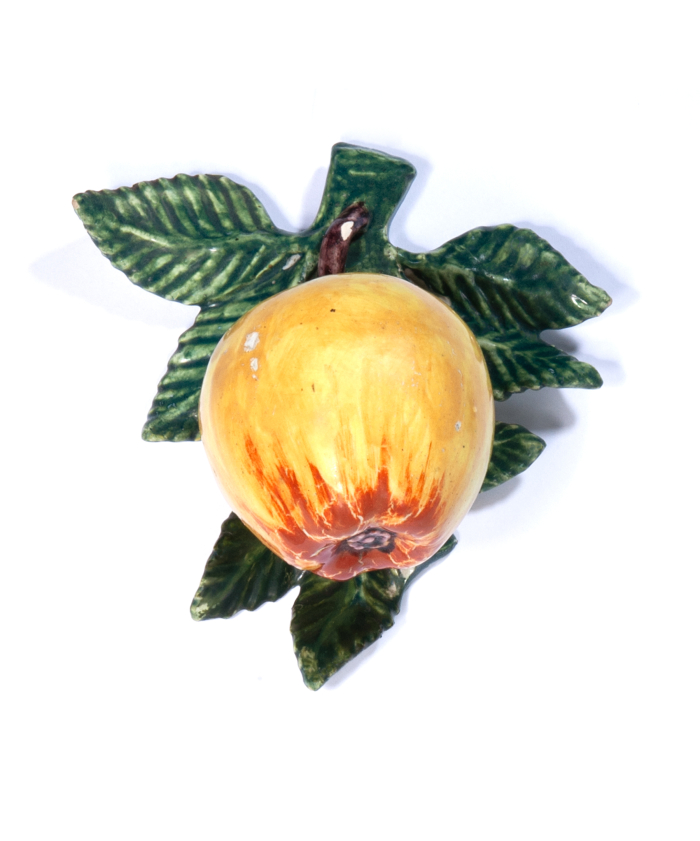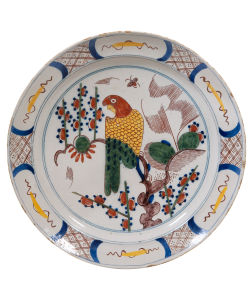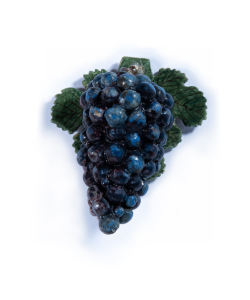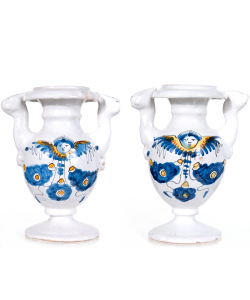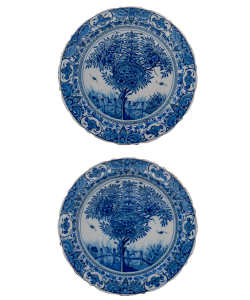A Fruit in Polychrome Dutch Delft Earthenware - Apple
Naturalistically colored and modeled resting on or suspended beneath a spray of green-veined leave shaded in green and issuing from a manganese stem.
Similar examples: Four fruit models of this type are illustrated by Van Dam, 2004, p. 173, pl. 116, who comments that these were "small items to decorate the table at any time of year;" and twelve fruits, including several very similar apples and pears, are illustrated by Lavino, P: 58, who on p. 81 also illustrates a collection of these fruit models hung against tiled walls. A garland composed of fifteen similar fruit models in the Musees Royaux d'Art et d'Histoire, Brussels, is illustrated by Helbig, Vol. 11, p. 70, fig. 57; and by De Jonge, 1965, p. 307, pI. 194, and De Jonge, 1970, p. 142, ill. 149.
- Origin
- Delft, The Netherlands
- Period
- Around 1780
- Material
- Dutch Delft earthenware
- Reference
- 112-657
- Sizes
- 14 x 14.2 cm
Share this article
